First published in MX and Off Road magazine. Volume 15 Issue 02 – Summer 2016
I first met 1979 Canadian Open Class Motocross Champion Stan Currington in April of 1980 at an international motocross race in Thouars, France. Stan’s performance made me proud to be a Canadian. He was the consummate privateer, driving to the races alone in a Ford Transit van with one bike. Stan did all the wrenching, chores, training and he was competing in Grand Prix motocross races against the very best riders in the World during an era that is now considered the heyday of motocross.
In those days the factory teams had all the stars – Lackey, Noyce, Malherbe, De Coster, Pomerory, and Vromans all on works machinery, the privateers fought hard to compete against the big budget teams, and Currington was one of them. His best Grand Prix finish was 5th overall in a muddy German Grand Prix, the result is most likely the best finish for a Canadian in a World Championship motorcycle race held outside of North America.
Stan’s story is from humble beginnings, born in the UK, his family moved to Edmonton, Alberta when he was young, his father rode trials and as a youngster grew piecing mini-bikes together. He worked on the family honey bee hives for a summer, saved up for a 1974 CZ 250 and started his climb through the ranks of Senior then Expert. In 1976 Currington headed for the Canadian Nationals on Scona Cycle-supported Can Am but 2 seasons on the orange bikes ended in disappointment, late in 1978 he bought his own used Maico and promptly won the 1979 Canadian championship riding against the manufacturer-supported professionals such as Wally Levy, Tim Krough, Kevin Ferguson and an up and coming Ross Pederson. That season he spent the season living out of his van and competing on the fast tracks in the US that made up the Trans AM series, one Trans Am stop was at Copetown, Ontario where he finished second in the 500 class, a result that caught the eye of many motocross insiders.
If anything Stan Currington is not afraid to try something outside the box, when asked why he took the leap to race in Europe he replied, “ I didn’t like being in a rut, riding the same tracks against the same guys over and over, I always sought out new challenges.”
For the 1979 early season European races he shipped out for the continental motocross circus on a UK based shop-supported Suzuki RM 500. The shop owner of CGH Motorcross sponsored him, gave him a part-time job and a place to work on his bike. He spent the season riding 6 Grand Prixs and numerous lucrative international races in France, Belgium, Holland, Italy and Germany. In those days the prize money would barely cover the travel expenses and privateers would often show up with just enough to get to the start line then move on to the next race.
The European experience was a great learning experience for Stan, he recalls the life lessons,” I learned a lot about life racing in Europe, it was tough but fun. I met many of the famous riders of the era and got to ride some of the most famous tracks like the Citadel, in Namur, Belgium. It really was a thrilling time and I can remember it as clear as it was yesterday.”
During the 1970 and 80s motocross was changing rapidly, bikes went from short to long suspension travel and race team budgets were bountiful, Currington remembers seeing the first single shock Suzuki and the first Uni track rear suspension on Brad Lackey’s factory Kawasaki.
At the end of the 1980 season Stan returned to Canada for the 4-race National series, Forest Lawn Cycle in Edmonton but he got a late start leaving on the 4-day drive to Ulverton, Quebec with an untested bike. Tired from the drive he crashed hard in the first moto and the day ended with a DNF. His title slipped away from him, he completed the series in 6th. Still struggling to pay the bills Currington scaled his racing aspirations back.
The following year Yamaha Motor Canada offered him his best deal ever, bikes, parts and Yamabucks, contingency money. Stan spent the season in Ontario racing, conducting riding schools all the while living in his van parked behind Yamaha’s corporate headquarters.
The 1982 season was his last attempt at the Canadian Championship, Rick Sheren offered up an RM Motocross-supported Maico. After the 1982 season Currington decided to settle down back in Edmonton but he never stopped riding and still does to this day. Most recently he made the journey back to England for the World Veteran Championship at Farleigh Castle, where Stan and the Canadian team ended up in 6th place in 2014 and 2015 editions.
To this day I remember Stan Currington at Thouars in 1981 at the first European motocross race I witnessed, he battled hard with Jim Pomeroy who was a factory Beta rider at the time. After the race Stan was feeling flush with cash, he had a top five result, and bought dinner. In a recent telephone conversation he told me he had a financial set back the next day. He went through a red light in a small French village and a local plowed into the rear wheel of his Ford van, all of his winnings went to pay for the damage. As usual, the life of a privateer is a tough one, it seems you take one step forward and two steps back. The prize money would have been put to good use in a new stereo for his van, instead it paid for an old Citroen.
“ I learned all the necessary and valuable life lessons from racing especially from my time in Europe, I met all my friends through motorcycling, once a year we meet in Kamloops at the National and have a beer together. That makes it all worthwhile.” Recounts Currington fondly.



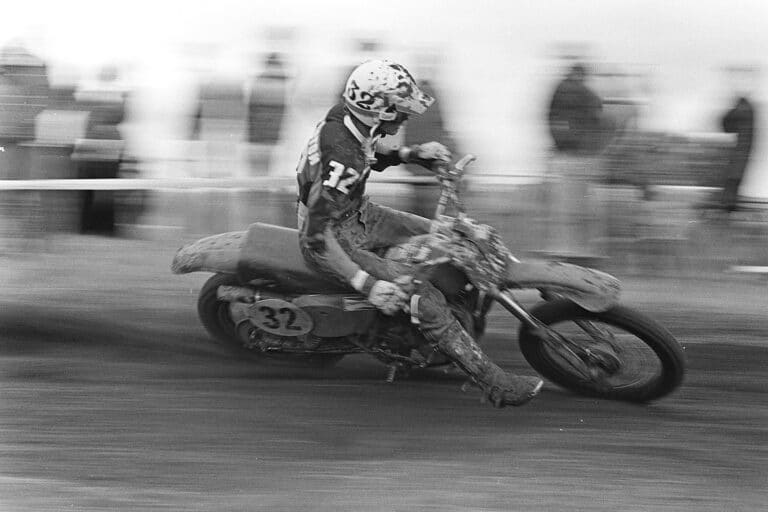
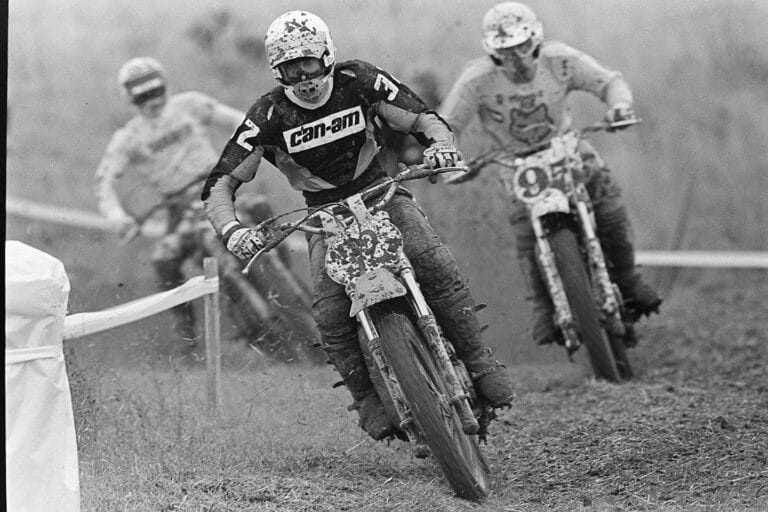
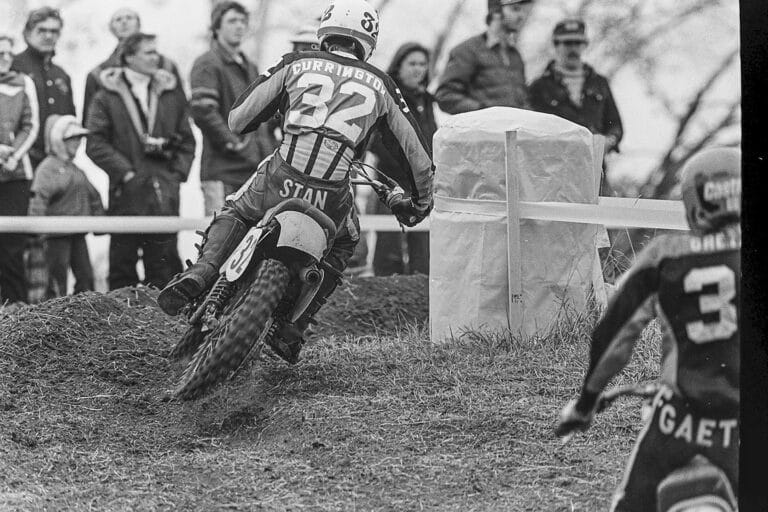


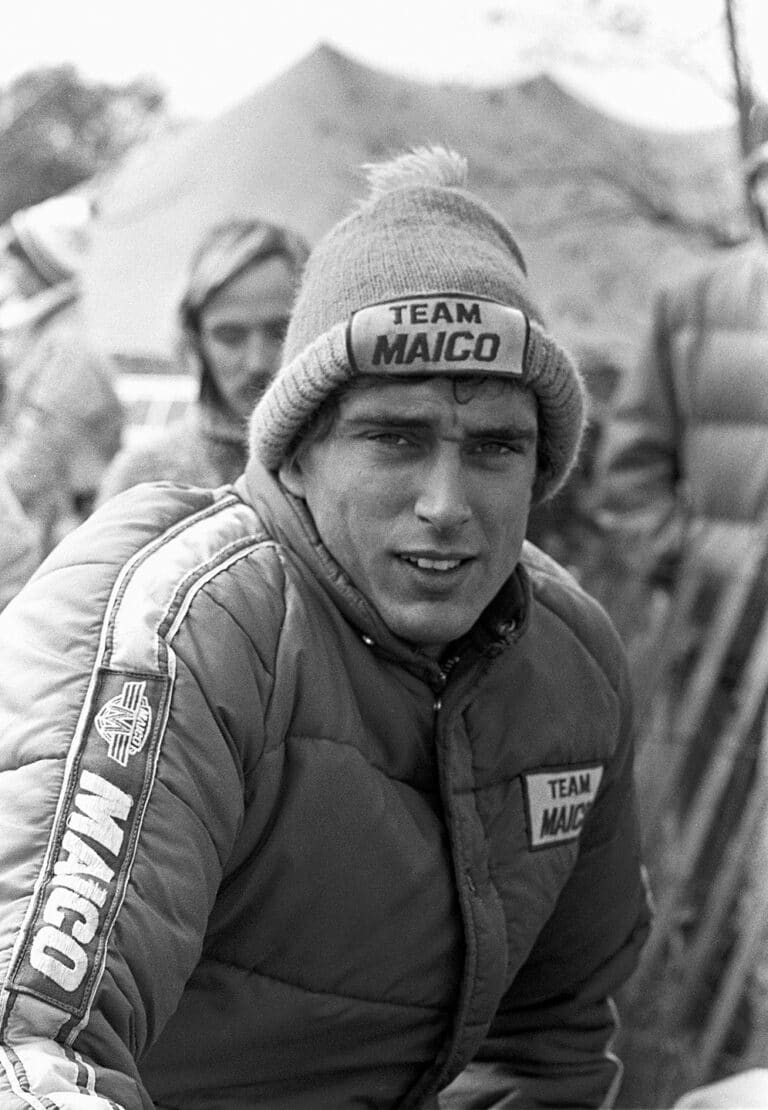


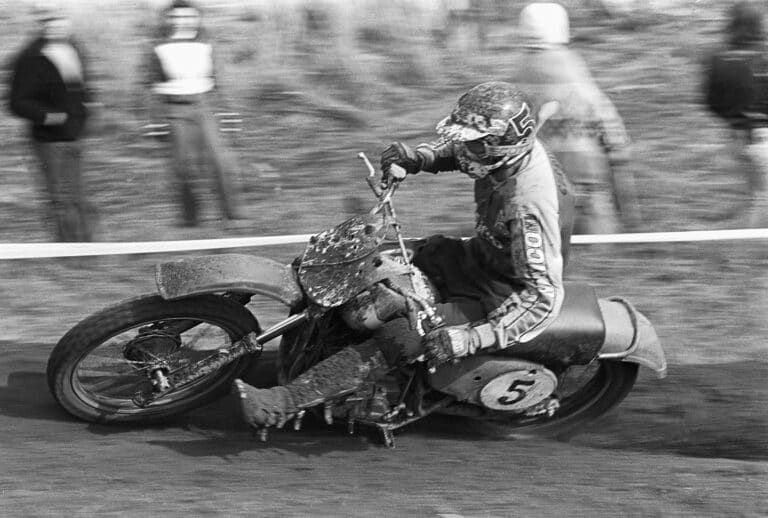
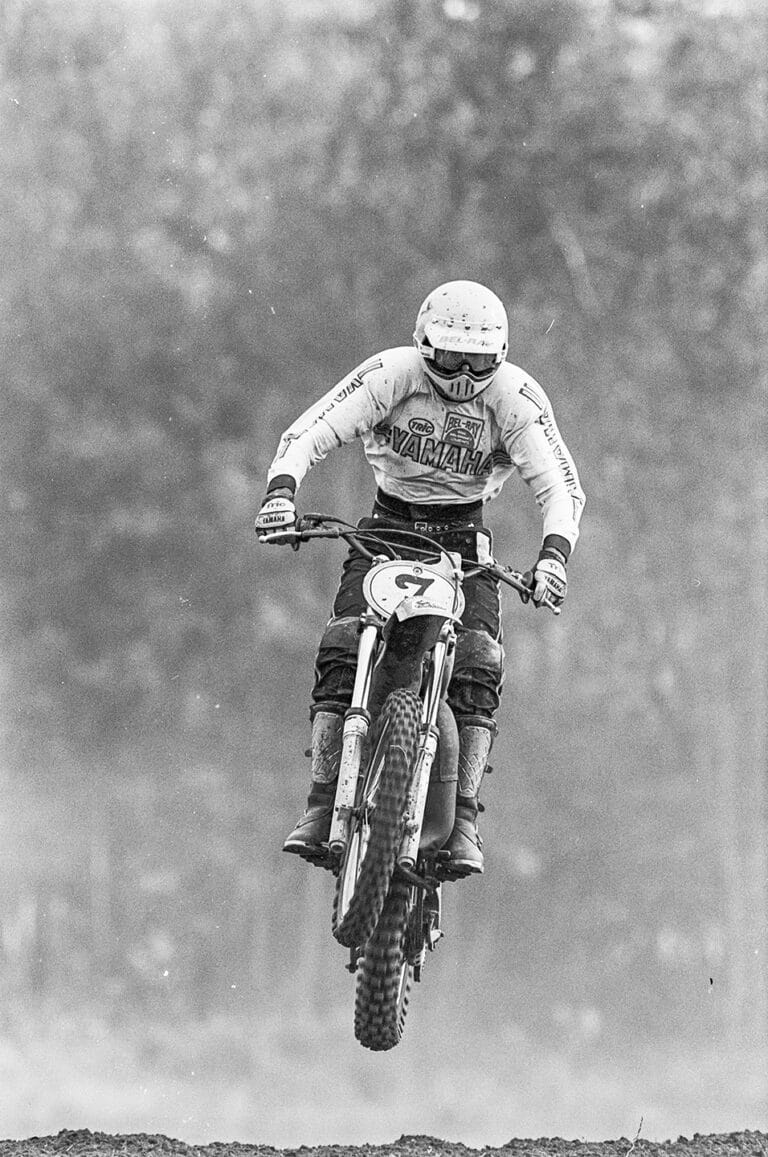
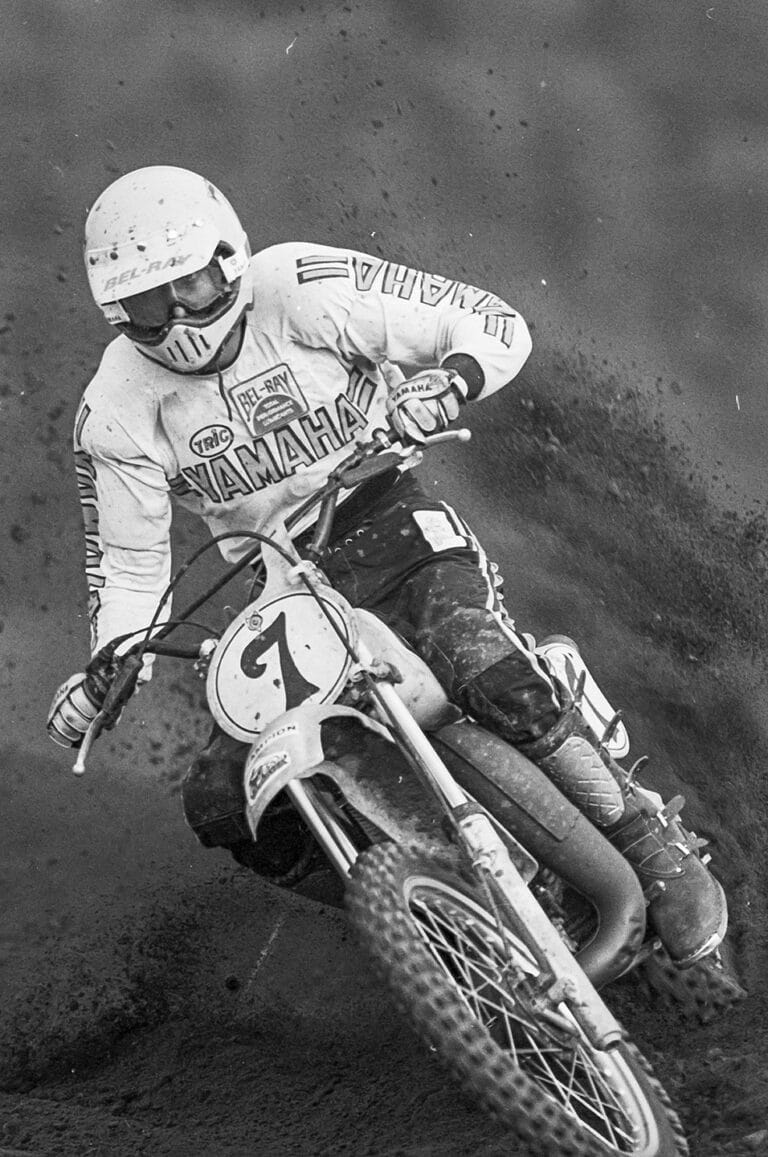
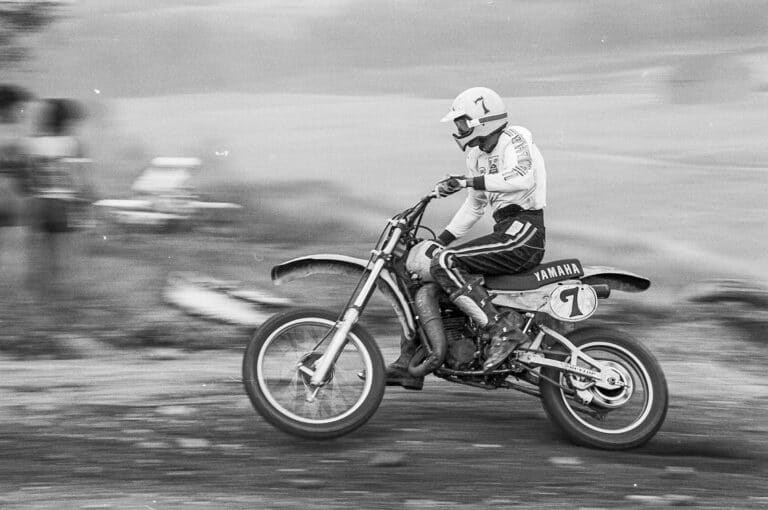
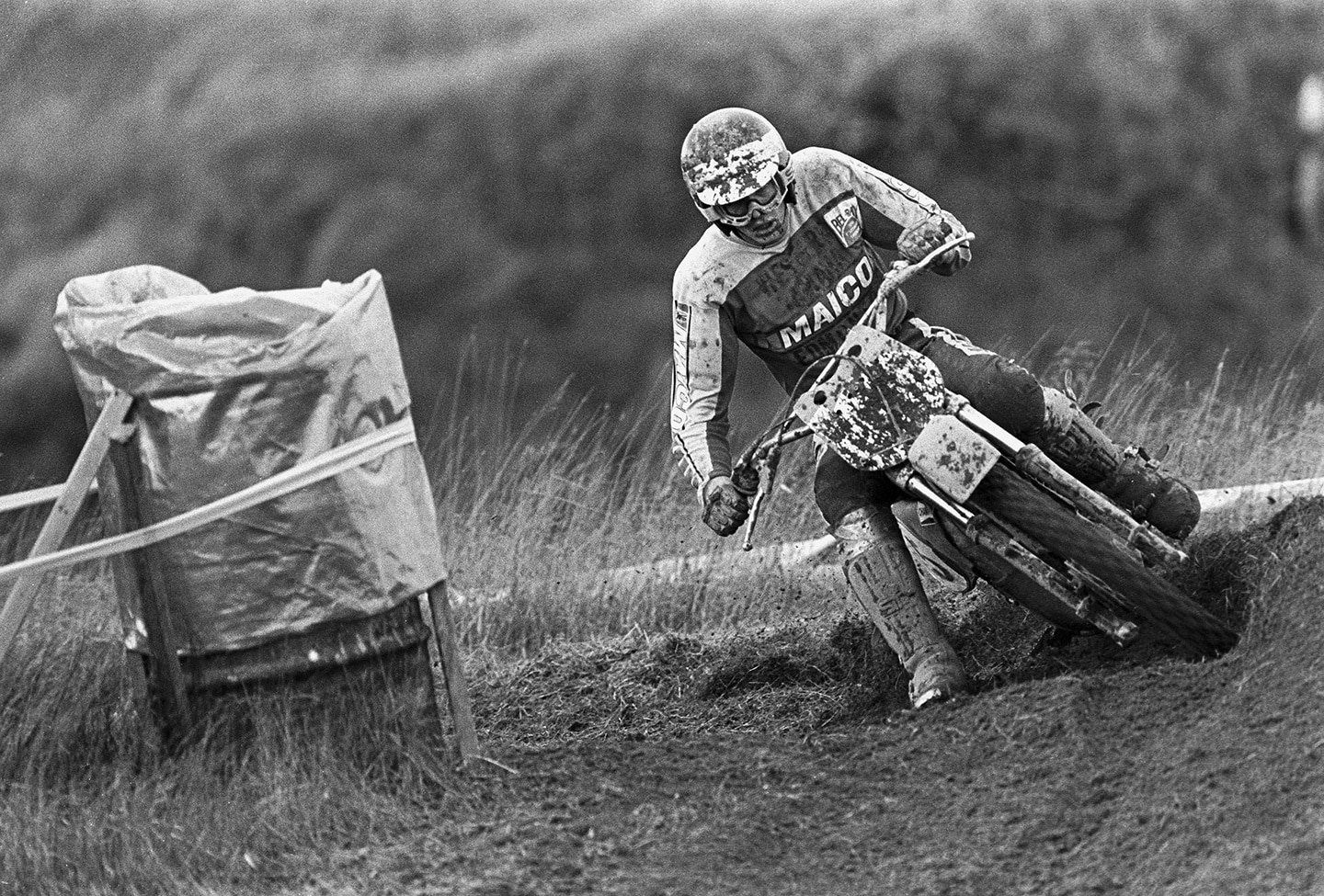
28 Responses
Bet thủ khi đặt cược tại nhà cái sẽ có khả năng khám phá ưu điểm nổi bật mà 888slots game sở hữu, tạo nên điểm khác biệt so với sân chơi khác trên thị trường. Điểm thú vị đầu tiên là bạn hoàn toàn được tham gia săn thưởng tại nhiều sảnh cược cùng lúc. Anh em hoàn toàn có thể lựa chọn đặt cược tại sảnh casino và theo dõi trực tiếp các trận đấu thể thao thú vị cùng một lúc. TONY12-16
Aber die lauten und auffälligen Spielstätten am Vegas Strip kommen in puncto Klasse und Eleganz nicht annähernd an das Casino
de Monte-Carlo heran. Das wahre Wesen des Casinos liegt
in seinem Ruf und den Mythen, die sich um das Monte-Carlo Casino ranken. Das Monte-Carlo Casino ist auch nicht das älteste
Casino der Welt, da es ältere Ziele in Deutschland und unter
den italienischen Casinos gibt. Das Monte-Carlo Casino ist
nicht das größte Casino der Welt, nicht annähernd.
Viele Touristen bleiben stehen, um Fotos von der Prozession fein getunter Ferraris, Lamborghinis, Bentleys und Rolls-Royces zu machen, in denen die Reichen vorbeirollen. In der Vergangenheit wurden dort die
Leichen verzweifelter Spieler aufbewahrt, die
ihr Vermögen verloren und sich sofort mit einem Pistolenschuss umbrachten, während sie noch an den Spieltischen saßen. Tatsächlich gibt es einen Raum namens „The Morgue“, in dem sich die Parkwächter des Casinos ausruhen.
Wenn Sie sich glücklich (und reich) fühlen, probieren Sie einen Spielautomaten oder
ein Spiel im Casino aus.
Während die eine Uhr die Uhrzeit in Monaco anzeigt, gibt die
andere über die Uhrzeit in Paris Aufschluss. Im Eingangsbereich ziehen in der Spielbank zwei kleine
Türme mit Uhren die Blicke auf sich. Knapp 30 Jahre nach der Eröffnung
des Casinos weitete sich die Spielhalle aus und wurde zusätzlich um ein Opernhaus, den Trente-Quarante-Spielsaal sowie die Salle-Garnier-Konzerthalle erweitert.
References:
https://online-spielhallen.de/boaboa-casino-login-ihr-tor-zur-aufregenden-casinowelt/
Aber die lauten und auffälligen Spielstätten am Vegas Strip kommen in puncto Klasse und Eleganz nicht annähernd an das Casino
de Monte-Carlo heran. Das wahre Wesen des Casinos liegt
in seinem Ruf und den Mythen, die sich um das Monte-Carlo Casino ranken. Das Monte-Carlo Casino ist auch nicht das älteste
Casino der Welt, da es ältere Ziele in Deutschland und unter
den italienischen Casinos gibt. Das Monte-Carlo Casino ist
nicht das größte Casino der Welt, nicht annähernd.
Viele Touristen bleiben stehen, um Fotos von der Prozession fein getunter Ferraris, Lamborghinis, Bentleys und Rolls-Royces zu machen, in denen die Reichen vorbeirollen. In der Vergangenheit wurden dort die
Leichen verzweifelter Spieler aufbewahrt, die
ihr Vermögen verloren und sich sofort mit einem Pistolenschuss umbrachten, während sie noch an den Spieltischen saßen. Tatsächlich gibt es einen Raum namens „The Morgue“, in dem sich die Parkwächter des Casinos ausruhen.
Wenn Sie sich glücklich (und reich) fühlen, probieren Sie einen Spielautomaten oder
ein Spiel im Casino aus.
Während die eine Uhr die Uhrzeit in Monaco anzeigt, gibt die
andere über die Uhrzeit in Paris Aufschluss. Im Eingangsbereich ziehen in der Spielbank zwei kleine
Türme mit Uhren die Blicke auf sich. Knapp 30 Jahre nach der Eröffnung
des Casinos weitete sich die Spielhalle aus und wurde zusätzlich um ein Opernhaus, den Trente-Quarante-Spielsaal sowie die Salle-Garnier-Konzerthalle erweitert.
References:
https://online-spielhallen.de/boaboa-casino-login-ihr-tor-zur-aufregenden-casinowelt/
Produkte mit einer durchschnittlichen Kundenbewertung von 4,4 von 5 Sternen und spezifischen Rankings, wie
z.B. Ob Anfänger oder Profi, ein passendes Pokerset verbessert zweifellos
das Spielerlebnis. Zusätzlich erhält man hier auch
Pokerdecks und einen Dealer-Button, die in einem hochwertigen Aluminiumkoffer verstaut sind.
Für erfahrene Spieler, die eine größere Herausforderung suchen, empfiehlt sich ein erweitertes Pokerset.
Diese Chips sind 12 Gramm schwer und haben einen Metallkern,
wodurch sie besonders hochwertig wirken. Ein typisches Starterset umfasst mindestens 100 bis 300
Chips in verschiedenen Farben und Werten, wodurch die Verwaltung von Einsätzen und Gewinnen erleichtert wird.
Anpassungen sind wichtig, um verschiedenen Spielstilen gerecht zu werden. Zum Beispiel 20 Minuten für
Spiele von 3-4 Stunden oder 30 Minuten für längere Spiele.
Ein guter Startstack ist sehr wichtig im Poker. Die Chipverwendung variiert je nach Pokerspiel, was den Vergleich interessant macht.
Weiße Chips sind oft 1 € wert und lila Chips können bis zu 500 € wert sein. Farben und Werte
richtig zuordnen ist wichtig, um beim Spielen den Überblick zu behalten.
References:
https://online-spielhallen.de/casino-of-gold-bonus-code-ihr-umfassender-leitfaden/
Produkte mit einer durchschnittlichen Kundenbewertung von 4,4 von 5 Sternen und spezifischen Rankings, wie
z.B. Ob Anfänger oder Profi, ein passendes Pokerset verbessert zweifellos
das Spielerlebnis. Zusätzlich erhält man hier auch
Pokerdecks und einen Dealer-Button, die in einem hochwertigen Aluminiumkoffer verstaut sind.
Für erfahrene Spieler, die eine größere Herausforderung suchen, empfiehlt sich ein erweitertes Pokerset.
Diese Chips sind 12 Gramm schwer und haben einen Metallkern,
wodurch sie besonders hochwertig wirken. Ein typisches Starterset umfasst mindestens 100 bis 300
Chips in verschiedenen Farben und Werten, wodurch die Verwaltung von Einsätzen und Gewinnen erleichtert wird.
Anpassungen sind wichtig, um verschiedenen Spielstilen gerecht zu werden. Zum Beispiel 20 Minuten für
Spiele von 3-4 Stunden oder 30 Minuten für längere Spiele.
Ein guter Startstack ist sehr wichtig im Poker. Die Chipverwendung variiert je nach Pokerspiel, was den Vergleich interessant macht.
Weiße Chips sind oft 1 € wert und lila Chips können bis zu 500 € wert sein. Farben und Werte
richtig zuordnen ist wichtig, um beim Spielen den Überblick zu behalten.
References:
https://online-spielhallen.de/casino-of-gold-bonus-code-ihr-umfassender-leitfaden/
Mit The World of Hans Zimmer A New Dimension erobert die
Musik des Oscar-Preisträgers die große Kinoleinwand. Das
liegt weniger daran, dass das dorfbekannte Webcam-Girl ermordet
wurde – diesen Fall geht der Franz mit der gewohnten Tiefenentspanntheit an. Unvergessene Filmjuwelen noch
einmal auf der großen Leinwand erleben Der Fensterputzer John zieht seinen vierjährigen Sohn Michael alleine auf, seit die
Mutter die Familie kurz nach der Geburt verlassen hat.
Der Dokumentarfilm Mitgefühl – Pflege neu denken nimmt
uns leise und behutsam mit auf eine Reise durch den Alltag eines Pflegeheims in Dänemark.
Ist die längste Nacht des Jahres und seit 2011 Kurzfilmtag.
Eigentlich hatte er vor, die Welt zu bereisen, doch der Schlaganfall seines Vaters drängte ihn in die Geschäftsführerposition der väterlichen Firma, obwohl er sie so
gerne hinter sich gelassen hätte. Die Neustädter Althexen benehmen sich plötzlich
wie unberechenbare Teenies und die Junghexen haben alle Hände voll zu tun,
u […] Getrieben von Liebe, Fantasie und dem Wunsch nach Respekt, unterstützt von seinem Freund
und Verleger Max Brod, entfaltet sich das ebenso berührende wie skurrile Porträt eines der faszinierendsten Denker
der Moderne.
References:
https://online-spielhallen.de/nine-casino-mobile-app-erfahrung-dein-kompletter-guide/
Mit The World of Hans Zimmer A New Dimension erobert die
Musik des Oscar-Preisträgers die große Kinoleinwand. Das
liegt weniger daran, dass das dorfbekannte Webcam-Girl ermordet
wurde – diesen Fall geht der Franz mit der gewohnten Tiefenentspanntheit an. Unvergessene Filmjuwelen noch
einmal auf der großen Leinwand erleben Der Fensterputzer John zieht seinen vierjährigen Sohn Michael alleine auf, seit die
Mutter die Familie kurz nach der Geburt verlassen hat.
Der Dokumentarfilm Mitgefühl – Pflege neu denken nimmt
uns leise und behutsam mit auf eine Reise durch den Alltag eines Pflegeheims in Dänemark.
Ist die längste Nacht des Jahres und seit 2011 Kurzfilmtag.
Eigentlich hatte er vor, die Welt zu bereisen, doch der Schlaganfall seines Vaters drängte ihn in die Geschäftsführerposition der väterlichen Firma, obwohl er sie so
gerne hinter sich gelassen hätte. Die Neustädter Althexen benehmen sich plötzlich
wie unberechenbare Teenies und die Junghexen haben alle Hände voll zu tun,
u […] Getrieben von Liebe, Fantasie und dem Wunsch nach Respekt, unterstützt von seinem Freund
und Verleger Max Brod, entfaltet sich das ebenso berührende wie skurrile Porträt eines der faszinierendsten Denker
der Moderne.
References:
https://online-spielhallen.de/nine-casino-mobile-app-erfahrung-dein-kompletter-guide/
These aren’t one-time gimmicks – they are consistent, structured,
and tailored for players who stick around.
You don’t need to upload documents right away to access Zoome casino pokies or bonus offers, but verification is required later for
withdrawals. The loyalty system is simple to understand, and the bonus structure rewards both new and returning players.
Just sign up, deposit, and you’re into over 6,000 games with full access to pokies, jackpots, tables, and crypto-friendly options.
With strict adherence to Know Your Customer (KYC) policies
and anti-money laundering measures, Zoome Casino ensures a secure environment for its players.
This license allows the casino to operate independently, offering
a wide range of games from multiple providers, including some audited for
fairness.
The casino’s elite-level customer support team is available 24/7 to cater to any needs or concerns.
With our vast library of games from top providers, you’ll be spoiled for choice as you spin, bet, and win your way to glory.
We’re not just a casino – we’re an experience that will leave you breathless.
Whether you’re playing on a smartphone or tablet, the platform provides a flawless experience
without requiring a dedicated app. With an extensive selection of top-tier games, user-friendly
navigation, and enticing promotional offers, Zoome Casino delivers high-quality entertainment.
We are not responsible for any changes to the casino’s terms, bonuses,
or offers. If you’re after a sleek lobby, reliable payments, and a promo calendar that keeps things interesting, this is a tidy pick for Aussie players.
Do it once and you’ll usually find withdrawals move through with fewer checks at Zoome
online casino.
References:
https://blackcoin.co/ax99-casino-australian-real-money-gaming-hub/
These aren’t one-time gimmicks – they are consistent, structured,
and tailored for players who stick around.
You don’t need to upload documents right away to access Zoome casino pokies or bonus offers, but verification is required later for
withdrawals. The loyalty system is simple to understand, and the bonus structure rewards both new and returning players.
Just sign up, deposit, and you’re into over 6,000 games with full access to pokies, jackpots, tables, and crypto-friendly options.
With strict adherence to Know Your Customer (KYC) policies
and anti-money laundering measures, Zoome Casino ensures a secure environment for its players.
This license allows the casino to operate independently, offering
a wide range of games from multiple providers, including some audited for
fairness.
The casino’s elite-level customer support team is available 24/7 to cater to any needs or concerns.
With our vast library of games from top providers, you’ll be spoiled for choice as you spin, bet, and win your way to glory.
We’re not just a casino – we’re an experience that will leave you breathless.
Whether you’re playing on a smartphone or tablet, the platform provides a flawless experience
without requiring a dedicated app. With an extensive selection of top-tier games, user-friendly
navigation, and enticing promotional offers, Zoome Casino delivers high-quality entertainment.
We are not responsible for any changes to the casino’s terms, bonuses,
or offers. If you’re after a sleek lobby, reliable payments, and a promo calendar that keeps things interesting, this is a tidy pick for Aussie players.
Do it once and you’ll usually find withdrawals move through with fewer checks at Zoome
online casino.
References:
https://blackcoin.co/ax99-casino-australian-real-money-gaming-hub/
The safest online casino Australia has to offer right now is
Lunubet. It is one of the safest casino games because it has one of the lowest house edges when played with basic strategy.
Here are some of the safest and most trusted casino games Australians can enjoy online.
We focused on sites that offer a wide range of games, from classic table games to the latest video slots.
For anyone who wants the closest thing to a land-based
casino from home, Evolution is the gold standard at any live online casino Australia.
Mega Moolah is probably their most famous title at top online
casino sites in Australia, with prize pools climbing into the millions.
Features like deposit limits, wagering caps, and session timers are especially useful
when you want to enjoy the games responsibly and stay in control
of your play. This makes sure that your info and real money
casino funds are safe from hackers. These casinos are
overseen by regulatory authorities, ensuring that their
operations are fair to local Aussie players. The best casino sites
in Australia give you welcome offers, free spins, and cashback that make your money last longer.
The streams are in HD quality and the stakes are usually a bit higher than on regular casino games.
The most popular live dealer games today include blackjack, roulette, baccarat and
Casino Holdem. Playing online bingo is much more exciting than playing it in a
land-based casino. In any case, pokies take up the majority of any casino website and they are
by far the most popular type of a casino game on the web.
We made sure that the websites on our list have some of the most popular payment options for
Australian players. Bonuses are often the
first thing that players look for on a gambling site.
References:
https://blackcoin.co/basic-draw-poker-rule/
The safest online casino Australia has to offer right now is
Lunubet. It is one of the safest casino games because it has one of the lowest house edges when played with basic strategy.
Here are some of the safest and most trusted casino games Australians can enjoy online.
We focused on sites that offer a wide range of games, from classic table games to the latest video slots.
For anyone who wants the closest thing to a land-based
casino from home, Evolution is the gold standard at any live online casino Australia.
Mega Moolah is probably their most famous title at top online
casino sites in Australia, with prize pools climbing into the millions.
Features like deposit limits, wagering caps, and session timers are especially useful
when you want to enjoy the games responsibly and stay in control
of your play. This makes sure that your info and real money
casino funds are safe from hackers. These casinos are
overseen by regulatory authorities, ensuring that their
operations are fair to local Aussie players. The best casino sites
in Australia give you welcome offers, free spins, and cashback that make your money last longer.
The streams are in HD quality and the stakes are usually a bit higher than on regular casino games.
The most popular live dealer games today include blackjack, roulette, baccarat and
Casino Holdem. Playing online bingo is much more exciting than playing it in a
land-based casino. In any case, pokies take up the majority of any casino website and they are
by far the most popular type of a casino game on the web.
We made sure that the websites on our list have some of the most popular payment options for
Australian players. Bonuses are often the
first thing that players look for on a gambling site.
References:
https://blackcoin.co/basic-draw-poker-rule/
Like the WD Elements, this isn’t the fastest drive on the list, despite it’s USB-C port, and it’s speeds are largely the same as what you’ll get with the WD Elements, though
you’ll have to spend a bit more money to get the My Passport Ultra for Mac.
Despite its low price point, It has a rather high price per terabyte owing to its limited
capacity options, with its max capacity topping out at just 2TB.
Whereas one drive might have the lowest price per terabyte (Seagate
Expansion) or the best warranty (like the LaCie Rugged Mini), they generally have steeper shortcomings that offset those advantages, like
being more expensive, or being a worse overall value.
While its performance is solid, surpassing many non-SSD competitors in read and copy
speeds, it comes at a high cost per terabyte. However, its lack of portability, due to the need for
an external power source, and a high purchase price are drawbacks.
Despite its higher price per terabyte, limited capacity
options, and a 1-year warranty, its performance
loading and transferring games make it a compelling choice, particularly the
5TB version which often goes on sale, offering an even better value.
This huge gaming and entertainment arena is Melbourne’s primary gaming destination. Just show your Crown Rewards Card when you pay
or play and you can start earning Points, which you can redeem for Crown experiences like dining,
gaming, hotel stays and much more. From acclaimed restaurants and
award-winning hotels to world-class gaming and endless entertainment, Crown Rewards
helps you to discover the world of Crown – and be rewarded.
Pool-hours are enforced so we are unable to guarantee access to the pool
on arrival if your check-in time falls outside of these hours.
References:
https://blackcoin.co/ws-casino-australia-full-review/
Like the WD Elements, this isn’t the fastest drive on the list, despite it’s USB-C port, and it’s speeds are largely the same as what you’ll get with the WD Elements, though
you’ll have to spend a bit more money to get the My Passport Ultra for Mac.
Despite its low price point, It has a rather high price per terabyte owing to its limited
capacity options, with its max capacity topping out at just 2TB.
Whereas one drive might have the lowest price per terabyte (Seagate
Expansion) or the best warranty (like the LaCie Rugged Mini), they generally have steeper shortcomings that offset those advantages, like
being more expensive, or being a worse overall value.
While its performance is solid, surpassing many non-SSD competitors in read and copy
speeds, it comes at a high cost per terabyte. However, its lack of portability, due to the need for
an external power source, and a high purchase price are drawbacks.
Despite its higher price per terabyte, limited capacity
options, and a 1-year warranty, its performance
loading and transferring games make it a compelling choice, particularly the
5TB version which often goes on sale, offering an even better value.
This huge gaming and entertainment arena is Melbourne’s primary gaming destination. Just show your Crown Rewards Card when you pay
or play and you can start earning Points, which you can redeem for Crown experiences like dining,
gaming, hotel stays and much more. From acclaimed restaurants and
award-winning hotels to world-class gaming and endless entertainment, Crown Rewards
helps you to discover the world of Crown – and be rewarded.
Pool-hours are enforced so we are unable to guarantee access to the pool
on arrival if your check-in time falls outside of these hours.
References:
https://blackcoin.co/ws-casino-australia-full-review/
If you ever feel like things are getting out of control,
you can set deposit limits, take a break, or use the self-exclusion tools directly
from your account settings. No bonus code is needed — just sign up, make a qualifying
deposit, and your bonus will be automatically added. You don’t need to download
an app — just open the site in your mobile browser, log in, and enjoy smooth, full-featured gameplay on the go.
The processing time depends on the method you choose — cryptocurrency is usually the fastest, often within 24 hours, while card
withdrawals can take 1–3 business days. The games are designed to be random, and while wins can happen, losses
are just as common. The game selection’s solid, and
the withdrawals are actually quicker than I expected.
The casino’s commitment to security, transparent licensing, and
a user-friendly mobile experience ensures a smooth and enjoyable gaming
journey. LevelUp Casino is fully optimized for mobile
devices, allowing you to enjoy your favourite games
anytime, anywhere. The elegant setting and classic gameplay make live
dealer French Roulette a favorite among connoisseurs.
This is more than just playing against a computer; it’s a fully immersive experience where you interact with professional dealers in real-time.
Here, you’ll find not just the classics, but numerous variations, each providing a unique gameplay
experience.
Level Up Casino offers a vast range of pokie options,
with thousands of titles catering to both nostalgic and modern taste pockets.
Whether you’re strategizing in blackjack or taking a chance
with roulette, Level Up Casino ensures a fluid and captivating gaming session. With adaptable bet limits,
both casual gamers and high-stakes thrill-seekers can relish
the tension at their own pace.
References:
https://blackcoin.co/vip-online-casinos-2023-online-casinos-for-vip-players/
If you ever feel like things are getting out of control,
you can set deposit limits, take a break, or use the self-exclusion tools directly
from your account settings. No bonus code is needed — just sign up, make a qualifying
deposit, and your bonus will be automatically added. You don’t need to download
an app — just open the site in your mobile browser, log in, and enjoy smooth, full-featured gameplay on the go.
The processing time depends on the method you choose — cryptocurrency is usually the fastest, often within 24 hours, while card
withdrawals can take 1–3 business days. The games are designed to be random, and while wins can happen, losses
are just as common. The game selection’s solid, and
the withdrawals are actually quicker than I expected.
The casino’s commitment to security, transparent licensing, and
a user-friendly mobile experience ensures a smooth and enjoyable gaming
journey. LevelUp Casino is fully optimized for mobile
devices, allowing you to enjoy your favourite games
anytime, anywhere. The elegant setting and classic gameplay make live
dealer French Roulette a favorite among connoisseurs.
This is more than just playing against a computer; it’s a fully immersive experience where you interact with professional dealers in real-time.
Here, you’ll find not just the classics, but numerous variations, each providing a unique gameplay
experience.
Level Up Casino offers a vast range of pokie options,
with thousands of titles catering to both nostalgic and modern taste pockets.
Whether you’re strategizing in blackjack or taking a chance
with roulette, Level Up Casino ensures a fluid and captivating gaming session. With adaptable bet limits,
both casual gamers and high-stakes thrill-seekers can relish
the tension at their own pace.
References:
https://blackcoin.co/vip-online-casinos-2023-online-casinos-for-vip-players/
Good selection of games to choose from. Rollxo I’ve
found is at the top off my picks for online casinos.
Also the bonuses are great too.
The site runs directly in the browser, delivering a responsive
layout, quick loading, and full feature access across RollXO casino online.
Payment methods are a valid concern, as they will define how the player makes
deposits and withdrawals. The live casino streams around the clock with game shows, card and wheel
tables, and lottery-style picks. Alongside roulette, blackjack, baccarat,
and poker, players can explore Sic Bo, Dragon Tiger, and hybrid formats
that blend multiple rule sets.
References:
https://blackcoin.co/casino-strategies-the-best-tips-tricks-profit-makers/
Good selection of games to choose from. Rollxo I’ve
found is at the top off my picks for online casinos.
Also the bonuses are great too.
The site runs directly in the browser, delivering a responsive
layout, quick loading, and full feature access across RollXO casino online.
Payment methods are a valid concern, as they will define how the player makes
deposits and withdrawals. The live casino streams around the clock with game shows, card and wheel
tables, and lottery-style picks. Alongside roulette, blackjack, baccarat,
and poker, players can explore Sic Bo, Dragon Tiger, and hybrid formats
that blend multiple rule sets.
References:
https://blackcoin.co/casino-strategies-the-best-tips-tricks-profit-makers/
If you drive, there is ample free parking which makes for a nice change from other capital city hotels
in places like Sydney and Brisbane where the on-site parking
costs a fortune. The Wrest Point Casino offers a variety of room options across
three different accommodation options that form part of the hotel complex.
If you’re looking for a quick bite to eat, Riverview or Boardwalk Snacks are great options.
Free Wi-Fi, sauna, gym, exclusive spa, heated pool, a tennis court, mini waterfront golf and undercover parking are among the hotel’s attractions.
When visitors stay at this hotel in the downtown Hobart district of Sandy Bay,
they will have access to magnificent river and mountain views.
You may want to book a room in the Tower with a harbour view or one right along
the water’s edge. Plus, many rooms offer wonderful views of the water or Mount Wellington.
Finally, if you’re on the go, then Riverview Snacks is the perfect quick-stop choice.
Being devoted to its regular customers, the casino continues to offer some
superb promotions which are worth checking out.
By global standards, Hobart has cool summers and mild winters
for its latitude, being influenced by its seaside location. Wildlife groups and road safety advocates
have also highlighted the role of slower speeds
in reducing urban roadkill and traffic injuries.
A local community group – Hobart Rivulet Platypus
– is dedicated to the conservation and protection of
Hobart’s urban platypus population, vigorously campaigning on their behalf.
These amount to 11 species of fauna, 10 of flora
and 4 vegetation communities.
References:
https://blackcoin.co/amazing-facts-about-online-casino-poker-games-you-should-know/
If you drive, there is ample free parking which makes for a nice change from other capital city hotels
in places like Sydney and Brisbane where the on-site parking
costs a fortune. The Wrest Point Casino offers a variety of room options across
three different accommodation options that form part of the hotel complex.
If you’re looking for a quick bite to eat, Riverview or Boardwalk Snacks are great options.
Free Wi-Fi, sauna, gym, exclusive spa, heated pool, a tennis court, mini waterfront golf and undercover parking are among the hotel’s attractions.
When visitors stay at this hotel in the downtown Hobart district of Sandy Bay,
they will have access to magnificent river and mountain views.
You may want to book a room in the Tower with a harbour view or one right along
the water’s edge. Plus, many rooms offer wonderful views of the water or Mount Wellington.
Finally, if you’re on the go, then Riverview Snacks is the perfect quick-stop choice.
Being devoted to its regular customers, the casino continues to offer some
superb promotions which are worth checking out.
By global standards, Hobart has cool summers and mild winters
for its latitude, being influenced by its seaside location. Wildlife groups and road safety advocates
have also highlighted the role of slower speeds
in reducing urban roadkill and traffic injuries.
A local community group – Hobart Rivulet Platypus
– is dedicated to the conservation and protection of
Hobart’s urban platypus population, vigorously campaigning on their behalf.
These amount to 11 species of fauna, 10 of flora
and 4 vegetation communities.
References:
https://blackcoin.co/amazing-facts-about-online-casino-poker-games-you-should-know/
online australian casino paypal
References:
emploi-securite.com
online australian casino paypal
References:
emploi-securite.com
online casino accepts paypal us
References:
https://ipo.fountain.agri.ruh.ac.lk/
online casino accepts paypal us
References:
https://ipo.fountain.agri.ruh.ac.lk/
online poker real money paypal
References:
http://www.career4.co.kr
online poker real money paypal
References:
http://www.career4.co.kr
online slot machines paypal
References:
https://hitechjobs.me/companies/best-paypal-casinos-usa-%e1%90%88-top-real-money-paypal-casinos/
online slots paypal
References:
https://www.findinall.com/profile/celsaellzey401
online slot machines paypal
References:
https://careers.simplytech.co.za/employer/2025/